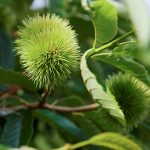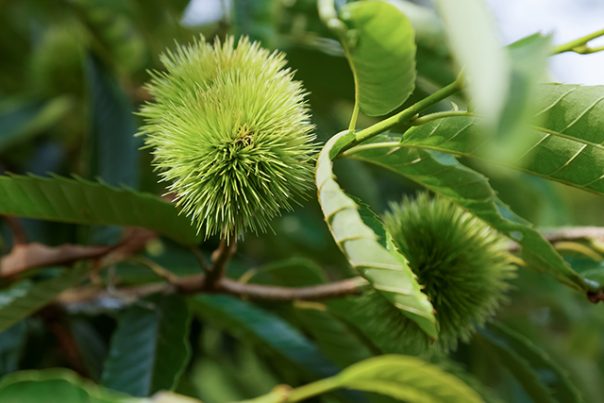
Foraging 101: 10 Wild nuts to forage every Fall
Thursday, September 01, 2022 by Zoey Sky
http://www.naturalnewstips.com/2022-09-01-10-wild-nuts-to-forage-every-fall.html

Nuts are delicious and nutritious. And when SHTF, wild nuts can be a great source of plant-based protein.
If you want to stock up on wild nuts for winter, forage for nuts like almonds and beechnuts in the fall. (h/t to PracticalSelfReliance.com)
Fall is a great time for foraging because you have a lot of options to choose from. Preppers should learn how to forage in the fall so they can stock up on natural food sources before winter.
Wild edible nuts are a great find for preppers, but they are a bit harder to find compared to dandelions. Note that most nut trees must be between 10 and 80 years old before they start to produce nuts.
If you’re not sure where to forage for wild nuts, look for old homesteads and older public spaces. You may also find wild nuts in old cemeteries. (Related: Foraging 101: Best US states to forage for food after SHTF.)
The types of wild nuts available to you may vary depending on the environment and growing zone, but these types are available across the United States.
Acorns
Acorns are probably the most abundant of all wild nut species.
Animals like squirrels and wild pigs can eat acorns as is, but you need to process them before you can consume them. Acorns are usually leached and made into acorn flour for baking various items like acorn flour cookies or acorn flour pancakes.
Alternatively, acorns can be shelled and boiled until they’re fully leached after several hours and then consumed whole. Acorns can also be roasted after hot leaching and eaten like salted nuts.
Here are some suggestions on how to eat and prepare acorns:
- Add cooked acorns to raisins or other dried fruit to make a trail mix.
- Substitute acorns for chestnuts when baking.
- Use acorn flour to make bread, cake, pancakes or flatbread.
- Use acorn flour to make acorn flour honey cake.
- Add acorn flour to regular flour and make pasta dough.
- Add acorn flour to a pancake recipe for a tasty and nutty breakfast.
Almonds
Wild almonds are mostly found in western parts of the country and near cultivated almond fields. There are some new varieties of zone 5 hardy almonds, but they haven’t been around long enough to allow wild seeded specimens to make it to the northeast.
Beechnuts
Beechnuts are common in Europe where they are both foraged and grown commercially for beech nut oil, particularly in France and England.
In America, wild beechnuts were an important food source for the pioneers and the indigenous population before colonization.
You may find beechnuts in abundance in the woodlands. You can identify them by their unique tri-cornered nuts inside a Velcro-like husk.
Black walnuts
Black walnuts are one of the most abundant wild nuts in the northeast. You may find wild black walnuts in the woods, along roadsides, in parks and almost anywhere squirrels hide nuts.
Black walnut trees begin baring at around 10 to 15 years old, so they also colonize clear cuts readily if there’s a mature nut baring tree nearby.
When foraging for black walnuts, look for a green outer husk and a hard shell that needs a bit of force to crack open.
Butternuts
Butternuts (Juglans cinerea) are less common than black walnuts.
Wild butternuts are also called white walnuts or sweet white walnuts due to their mild, sweet nutty flavor.
Like black walnuts, butternuts have a green outer husk and a hard inner shell. The main visual difference is black walnuts are nearly round, while butternuts are more elongated.
Chestnuts and chinquapins
Wild chestnuts are also a lot less common than they used to be due to a chestnut blight, but the native wild trees are interbreeding with resistant Asian chestnut species and hybrids are doing quite well in the wilderness.
In the past, chestnuts were used to make chestnut flour and eaten as a wheat flour substitute by peasants, particularly in Europe.
Chestnuts can be used to make desserts and savory dishes. Pair mashed or whole braised chestnuts with brussels sprouts, cabbage, carrots, mushrooms and sweet potatoes.
Hazelnuts
Wild hazelnuts are incredibly common, but they’re much harder to find in autumn.
Hazelnuts mature in late August, which is when the wildlife starts harvesting them. During this time, hazelnuts are “green” and moist on the inside so you need to dry them until they’re ready.
To beat squirrels also looking for hazelnuts, forage them before labor day. Store foraged hazelnuts for a month or two in a well-ventilated area so they can dry for storage.
In heavy years, hazelnuts will hang all autumn and into winter if there aren’t a lot of animals to harvest them all in late summer.
Heartnuts
Heartnuts (Juglans ailantifolia) are similar to walnuts.
Heartnuts are a sweet rich nut with a mild flavor. They’re also similar to butternuts, but the nuts themselves are heart-shaped instead of football-shaped like the latter.
Hickory nuts and pecans
There are many different types of hickory nuts (Carya sp.) in the wild. Pignut hickories (C. glabra) are bitter and mostly used for oil, while shagbark hickory (C. ovata) is sweet and delicious.
Wild pecans are also in this genus, and the growth habit of all the trees is very similar. Shagbark hickories are popular among foragers because they are delicious and their bark can be used as a natural flavoring.
Even if you don’t find one with nuts during fall, you can gently pull off pieces of their shaggy bark, which they shed naturally, to make shagbark hickory syrup.
Pine nuts
Nut pines are most common in the western states, but permaculture enthusiasts have started growing a specific strain of cold hardy Korean nut pine in the northeast. When those cultivated pine nuts start seeding, there will be plenty of them in the wild for foraging.
Use pine nuts to make the following dishes:
- Grilled fish with charred onions and pine nuts
- Lemon tart with pine nuts
- Pignoli pine nut cookies
- Pasta with pine nut pesto
- Pine nut and white bean dip
Go to GreenLivingNews.com for more foraging tips.
Watch the video below to learn how to harvest almonds.
This video is from the Cahlen channel on Brighteon.com.
More related stories:
Food supply tips: 5 Things you need to learn when foraging for nutrient-dense food.
5 Common edible plants for urban foraging (plus foraging tips).
Foraging 101: Tips for mushroom foraging.
Sources include:
Tagged Under: Tags: emergency food, food freedom, food supply, foraging, goodfood, green living, homesteading, nuts, off grid, preparedness, prepper, prepping, self sufficiency, SHTF, survival, survival food, tips, wild nuts
RECENT ARTICLES


Are you eating GMO foods without knowing it?
By Olivia Cook

How to prepare for an EMP strike
By Zoey Sky

Prepping101: How to use basic survival tools effectively after SHTF
By Zoey Sky

Gardening 101: Save money on food with hydroponics
By Zoey Sky
COPYRIGHT © 2017 NATURAL NEWS TIPS


